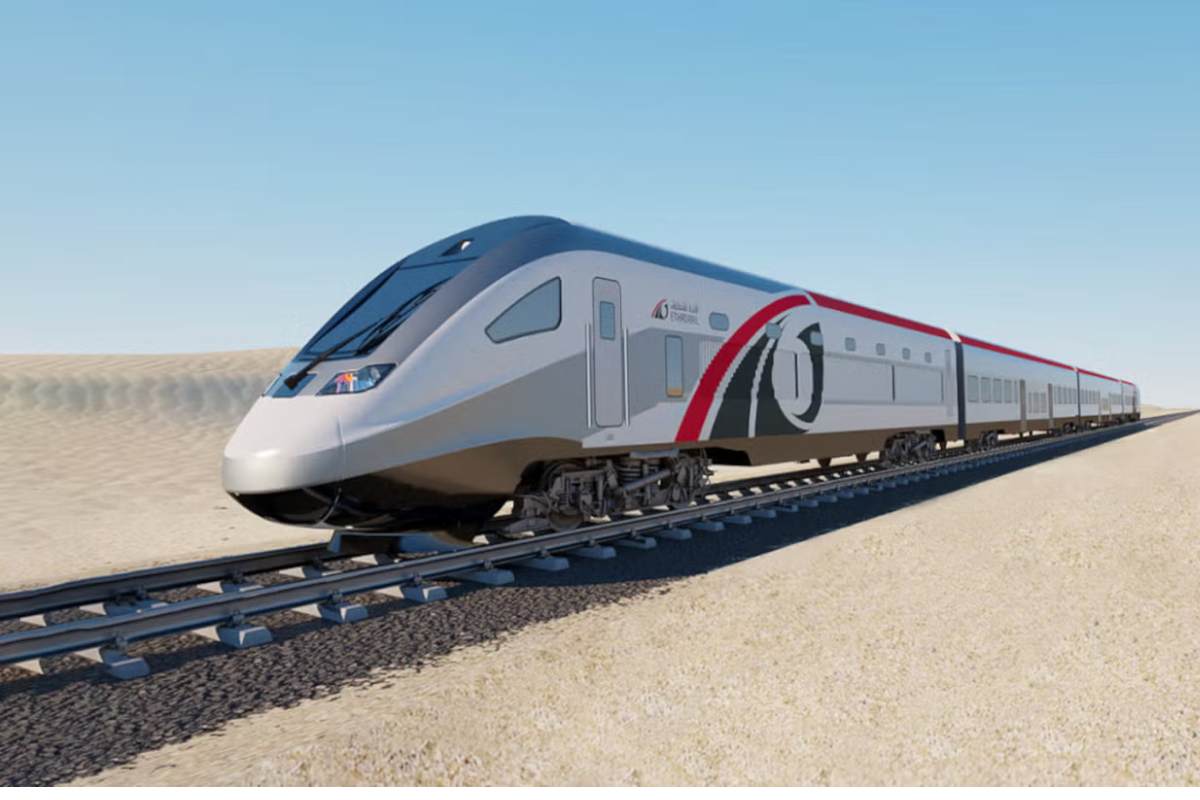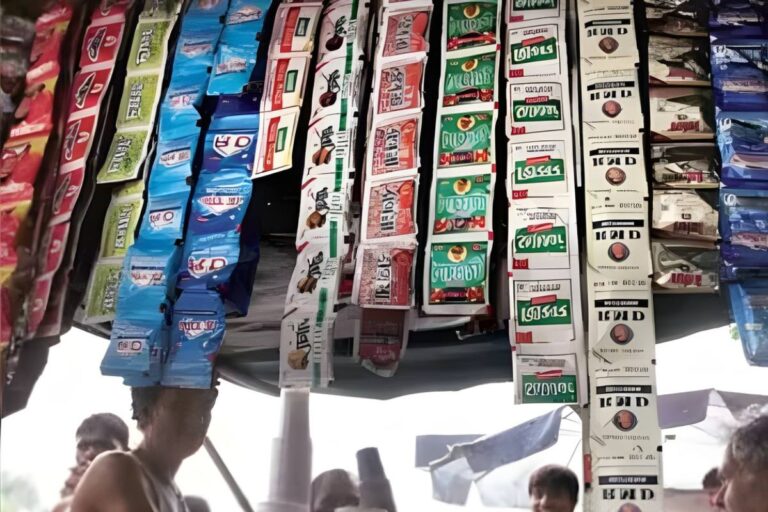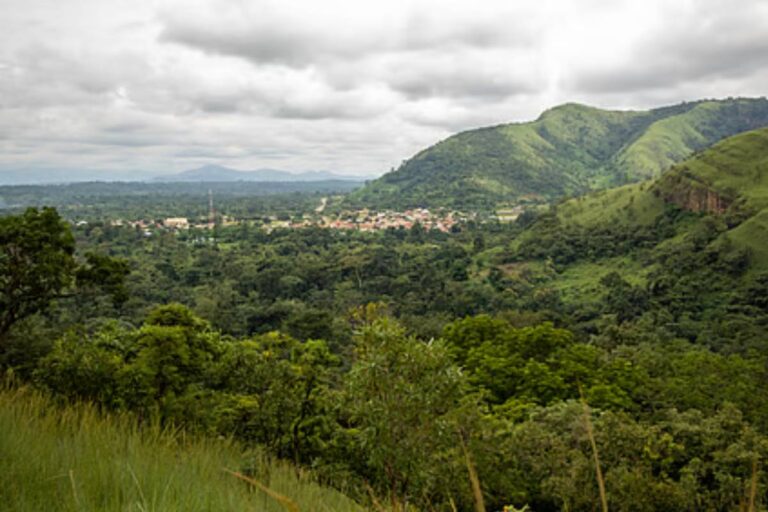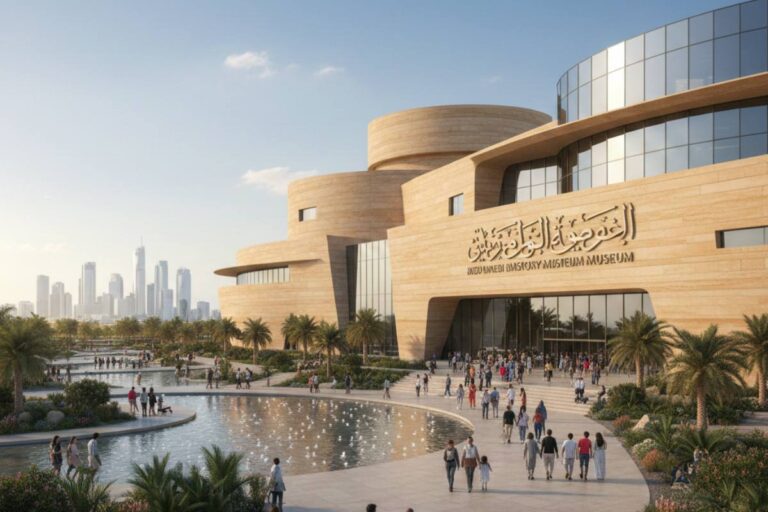The United Arab Emirates is about to witness a sweeping transformation in how its people and goods move. The centerpiece? Etihad Rail, a 900km national railway network, stretching from the western border with Saudi Arabia all the way to Fujairah on the eastern coast. This flagship rail project promises not just faster journeys, but a complete change in daily living, commerce, tourism, and even the environment.
Below, we take you inside the Etihad Rail project: how it works, who it serves, and what it could mean for everyone across the seven emirates.
What Is Etihad Rail?
Etihad Rail is the United Arab Emirates’ answer to seamless, sustainable, and state-of-the-art railway connectivity. Built to international standards, the network binds together all principal centers of commerce, industry, and population. But it’s more than just tracks and trains; it’s a national vision.
Key Details at a Glance
- Total Length: 900 kilometers
- Spans: All seven emirates
- Key Cities & Towns Connected: Abu Dhabi, Dubai, Sharjah, Umm Al Quwain, Ras Al Khaimah, Fujairah, Al Ain, Ruwais, Al Sila, Al Mirfa, Ghweifat, Al Dhaid, Sakamkam, and more
- Launch of Passenger Service: Commercial operations scheduled for 2026
- Targeted Ridership: 36.5 million passengers annually by 2030
- Max Train Speed: Up to 200km/h
- Stations: At least four main hubs (Abu Dhabi, Dubai, Sharjah, Fujairah) with additional stops in smaller towns and industrial hubs
- Freight Services: Already underway since 2016
From Concept to Completion: The Journey So Far
They didn’t just decide, one day, to lay tracks across the desert. The Etihad Rail dream has been taking shape in phases, building tracks and connections bit by bit.
Phase One: A Freight Foundation
Started in 2016, Phase One focused on freight. And not just any freight, granulated sulphur, hauled from the Shah and Habshan fields to Ruwais Port. This stretch, about 264km long, set the tone: safe, efficient, eco-friendly rail haulage right through the heart of the country. They proved it worked. They showed it mattered to industry.
Phase Two: Nationwide Passenger & Freight Network
But the vision? Much bigger. Beginning in 2020, Phase Two erupted outwards, connecting towns, linking ports, and, crucially, laying down the track for passenger journeys. Big cities, small towns, industrial zones, ports on both the Gulf and Arabian Sea, all on one web of steel.
By 2023, freight lines were open nationwide. And as we move closer to 2026, the day of hopping on a high-speed train from Dubai to Abu Dhabi, Sharjah to Ras Al Khaimah, or even Sakamkam to bustling city centers is almost here. Tracks now thread through all seven emirates, uniting them as never before.
All Aboard: Who Gets Connected?
Here’s the kicker: It’s not just for the big cities. Towns that once seemed off the beaten path now have a ticket into the center of the UAE’s economic and social life.
Cities and Regions on the Etihad Rail Map
Let’s make it crystal clear: these are some of the key urban and rural connections that Etihad Rail will make possible:
- Abu Dhabi: The capital. A hub for business, government, and culture.
- Dubai: The region’s commercial heartbeat.
- Sharjah: A center for education and industry.
- Umm Al Quwain: Soon, only a short ride away.
- Ras Al Khaimah: Northern trading and manufacturing powerhouse.
- Fujairah: The eastern port, with direct rail access, means more exports, more tourism.
- Al Ain: Oasis city, home to heritage, universities, and agriculture.
- Ruwais, Al Sila, Al Mirfa, Ghweifat, Sakamkam, Al Dhaid: No longer remote. Easy access to work, education, markets, and leisure.
These aren’t just dots joined by steel. They’re gateways for:
- Commuters skipping daily traffic jams
- Tourists heading for mountain trails or coastlines
- Students accessing distant universities
- Businesses needing to move goods, fast and affordably
Funny thing is, what was once a long and winding road trip (sometimes 4 hours or more) becomes, well, almost blink-and-you-miss-it.
Travel Times That Change Everything
A journey that used to take hours by car will soon take a fraction of the time by rail. Let’s get specific:
- Abu Dhabi to Dubai: About 50 minutes by train.
- Dubai to Fujairah: 50 minutes as well.
- Abu Dhabi to Fujairah: Clocks in at roughly 100 minutes, not bad considering it’s nearly the full width of the country.
- Other towns (Al Ain, Ruwais, Sharjah): All slotted into this fast-lane network, no matter whether you start at sunrise or after sunset.
And for the daily commuters, students, or day-trippers: That means more time at home, at work, or with friends, rather than stuck behind the wheel.
The Towns Speak: Local Impact and Resident Expectations
You might be wondering: So they’re laying track through small towns like Sakamkam and Al Sila? What’s in it for the locals?
Turns out, residents are, understandably, optimistic.
“We’ve always felt a bit cut off, you know? Now, getting to the city won’t just be easier. It’ll be a reason for more people to visit us,” says a Sakamkam resident.
For those living in Ruwais, Al Mirfa, or Ghuweifat, the impact is crystal clear:
- Better access to jobs and universities in major urban centers
- Affordable, reliable transport that doesn’t require owning a car
- A boost to tourism, since visitors can skip car rentals and just hop on a train to the coast or mountains
- Local small businesses, now within reach of more customers and suppliers
And here’s the wildcard: That movement of people, goods, and ideas? It goes both ways. City dwellers can visit coastal or mountain towns for weekends or festivals with ease. Townspeople have new access to everything big cities offer.
The Heart of the Network: The Four Major Passenger Hubs
It’s not all just “hop on, hop off.” Four main passenger stations will anchor Etihad Rail’s grand plan. Each will serve as both a starting point and a destination for millions.
- Abu Dhabi: Modern station near business districts and government hubs
- Dubai: Station perfectly linked with the city’s metro, roads, and airport
- Sharjah: Hub for northern emirates and commuters
- Fujairah: Direct access to beaches, ports, and tourist trails
From there, spurs and stops branch out to towns, industrial areas, and border crossings. And if you’re picturing old-style train carriages, think again.
Modern Trains: Designed for Comfort, Efficiency, and Speed
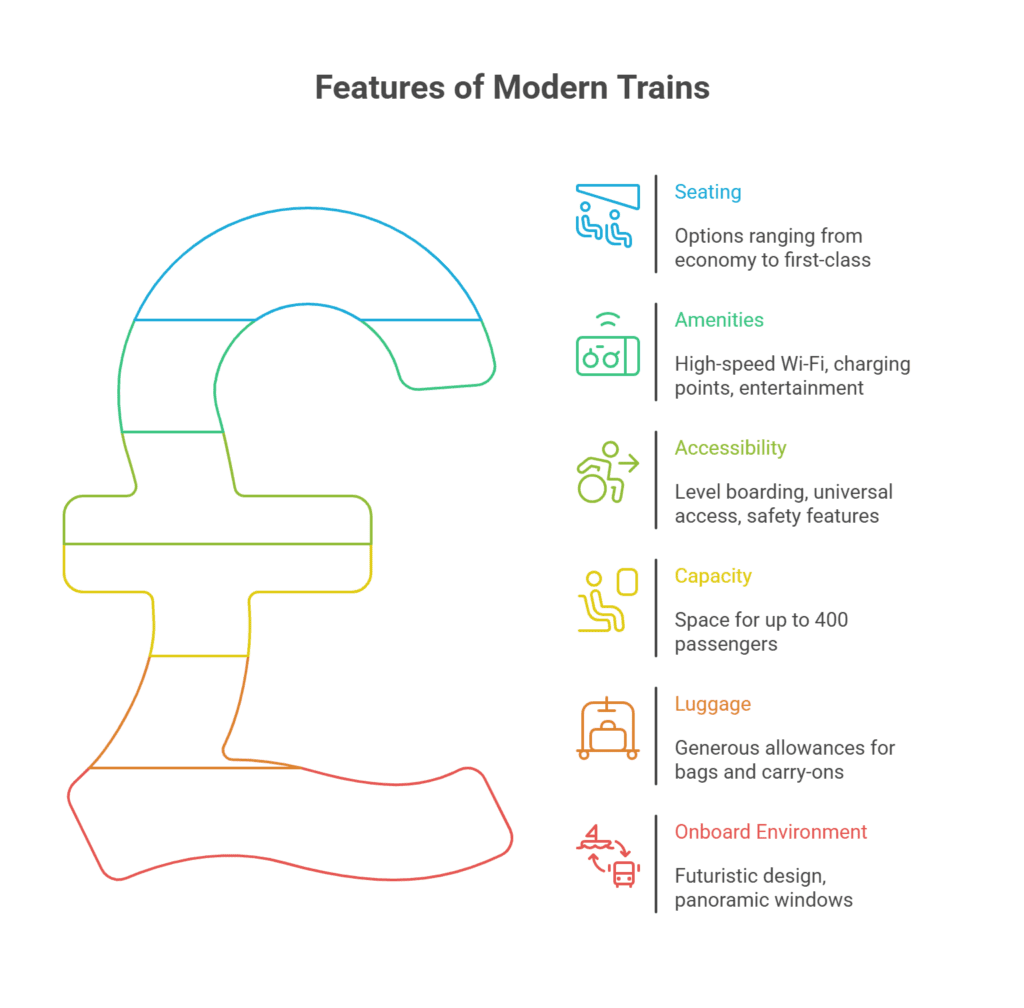
Inside, the Etihad Rail experience looks nothing like the trains of old. Here’s what you can expect:
- Seating: Choices range from economy to “business” and first-class style arrangements
- Amenities: High-speed Wi-Fi, plenty of charging points, in-seat entertainment, clean restrooms, and a range of food and beverage options
- Accessibility: Level boarding, universal access, comfortable walkways, safety features for all passengers
- Capacity: Up to 400 passengers per train, with space for families, groups, and individuals
- Luggage: Generous allowances for bags and carry-ons
- Onboard environment: Futuristic, aerodynamic design, panoramic windows for desert and mountain views
The feeling? Relaxed, efficient, safe, and a reliable alternative to flying or driving.
Environmental Impact: Rail as the Green Choice
Let’s be honest. The UAE is famous for flashy cars and multi-lane highways. But Etihad Rail? It’s a move in another direction, clean, green, and sustainable.
- Carbon Reduction: Trains powered by electricity or cleaner fuels mean lower emissions compared to thousands of individual cars and heavy trucks.
- Net Zero Ambition: The railway links directly to the UAE’s goal of net zero emissions by 2050.
- Truck Replacement: For freight, each train moves the load of up to 300 trucks, which’s fewer vehicles, less pollution, and reduced road wear.
- Safety: Fewer vehicles on roads, fewer accidents, and less congestion.
The ripple effect? Cleaner air, quieter roads, and progress towards a more sustainable future.
Economic Ripple Effects: More Than a Train Line
Steel tracks don’t just move passengers, they move economies.
- Freight Efficiencies: Big industrial centers like Khalifa Port, Jebel Ali, KIZAD, and Fujairah Port can serve more markets, more quickly.
- Less Congestion: Smoother movement of goods and people means less downtime for businesses.
- Tourism Growth: Suddenly, every beach, mountain, souq, or festival is “rail accessible” to millions.
- Logistics Integration: Seamless connections for imports, exports, regional supply chains, all tied to Etihad Rail’s “backbone” network.
Here’s a fun tidbit: Estimates suggest that by 2030, the train could carry as much as 60 million tonnes of freight, in addition to tens of millions of passengers.
Strategic Bridges: Linking GCC Neighbors
Wait, there’s more, because those rails don’t stop at the UAE’s border.
- Saudi Arabia: Tracks at Ghuweifat reach right up to the border, with plans for through-freight and passenger trains to future GCC partners.
- Oman: The Hafeet Rail Project will link UAE and Omani cities, making cross-border business and travel faster than ever.
- The Bigger Goal: A unified Gulf rail network, knitting together the economies and people of the whole region.
The Visionaries Behind the Tracks
You’ve probably guessed: No project like this happens without strong leadership and vision.
United Arab Emirates’ leaders, including His Highness Sheikh Mohammed bin Rashid Al Maktoum and His Highness Sheikh Theyab bin Mohamed bin Zayed Al Nahyan, have been closely involved, from riding the first test trains to championing the rail’s role in national strategy.
As Sheikh Theyab bin Mohamed bin Zayed Al Nahyan summed it up,
“This project propels the progress of our nation, it’s about unity, opportunity, and our country’s leadership in connectivity and logistics.”
The Passenger Experience: What Riders Can Expect in 2026
Picture this: You leave your home, walk five minutes to a sparkling new railway station in your town, and in under an hour, you’re in the downtown tower of Dubai or the cultural heart of Abu Dhabi.
- No wrestling through motorway traffic.
- No searching for parking.
- Just a comfortable seat, a cup of tea, maybe a favorite show streaming on your device, and views of the desert, mountains, or sea rolling by.
For the millions expected to switch to rail, year after year, it’s not just convenience, it’s a whole new rhythm of modern Emirati life.
The Road Ahead
Now, a quick reality check. While cargo is already moving across the completed stretches, passenger service won’t launch until 2026. That date can’t come soon enough for commuters tired of gridlock and those ready to explore their own country effortlessly, one railway journey at a time.
But when that first train rolls out, linking village, town, and city, well, that’s when a new chapter in UAE’s national story begins.
Quick Facts: Etihad Rail’s Game-Changing Numbers
- Network Length: 900km
- Connected Cities and Towns: 11 key cities (and counting)
- Main Stations: Abu Dhabi, Dubai, Sharjah, Fujairah
- Passenger Train Speed: Up to 200km/h
- Planned Annual Ridership: 36.5 million passengers by 2030
- Freight Target: 60 million tonnes/year by 2030
- Commute Time (Dubai-Abu Dhabi): About 50 minutes
- Launch Date (Passenger): 2026
- Vision: Sustainability, unity, nationwide opportunity
The Bottom Line
For decades, the United Arab Emirates has been synonymous with fast cars, luxury airports, and superhighways. Now, it’s about to become a rail nation, one where every resident, from mega-city dweller to small-town local, can feel truly connected.
With Etihad Rail, movement across the UAE is set to become faster, greener, and, perhaps most of all, remarkably simple. And so, the tracks at your doorstep are not just steel, they’re the future, racing by at 200km/h, headed straight toward unity, efficiency, and prosperity for everyone, everywhere.








